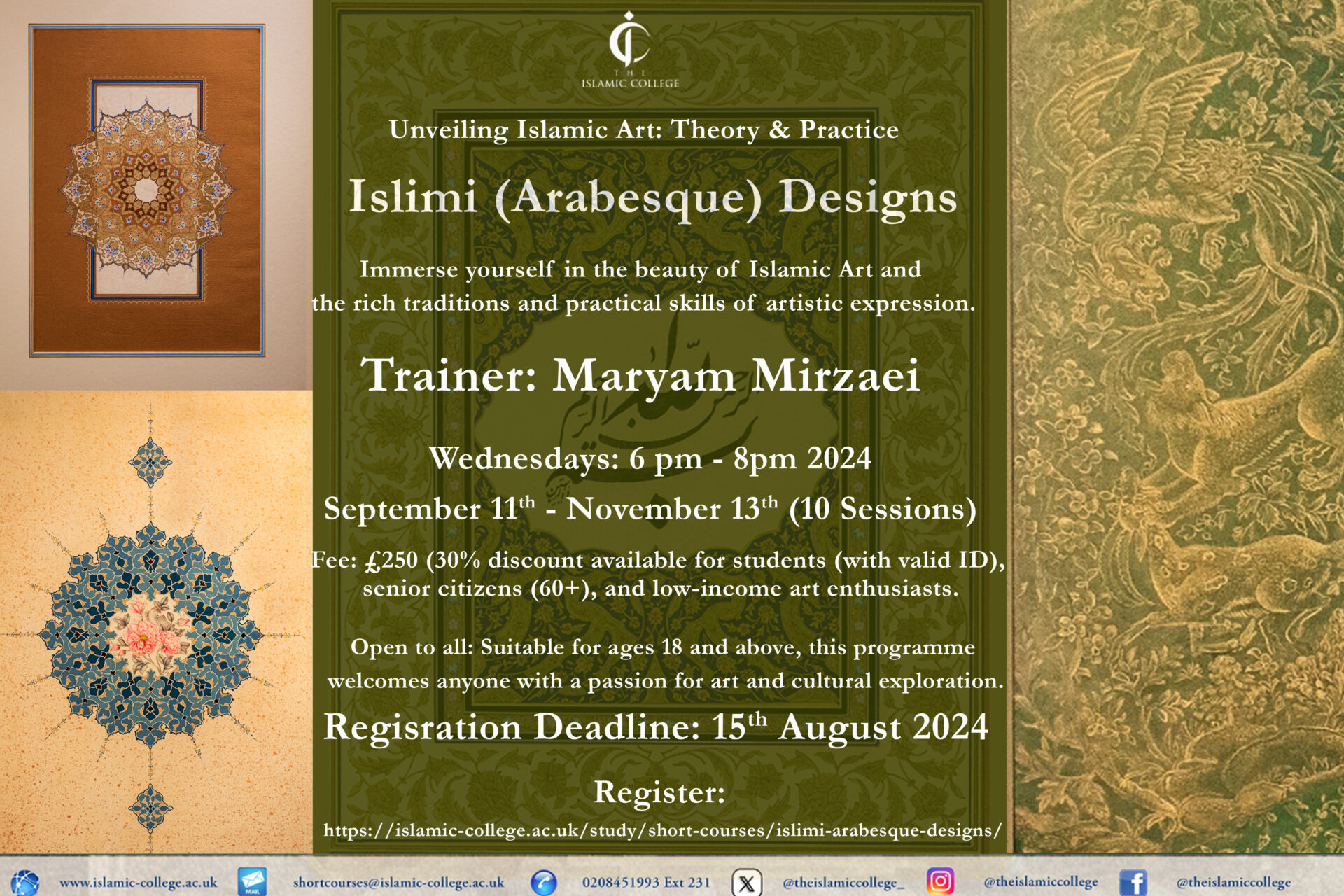Immerse yourself in the beauty of Islamic Art:
The Islamic College presents a new program designed to introduce you to the rich traditions and practical skills of Islamic artistic expression.
Hands-on learning:
This course emphasizes a practical approach, providing you with the opportunity to create your own stunning Islamic art pieces.
Master the art of Islimi design:
Under the guidance of internationally renowned and classically trained artist Maryam Mirzaei, you’ll delve into the fundamentals of Islimi (Arabesque) patterns, exploring their creation and significance.
The Rise of Islamic Geometric Art
After Persia became part of the Islamic world, the depiction of living beings in art took a backseat. This prohibition, however, spurred the flourishing of Islamic geometric art, known as Islimi, among other artistic styles.
Applications of Islimi
Islimi art adorns calligraphic headings and shamsas (sunbursts), which are palettes that separate verses in the Quran and other revered texts. It is interwoven with geometric patterns to create stunning frontispieces for the holy book. Islimi is also a key architectural feature. It appears on intricate friezes crafted from ceramic, stone, plaster, and wood.
Universal Principles, Diverse Expressions
While various styles of Islimi exist within Islamic art, they all share the same archetypal principles. These principles resonate with biomorphic decorative arts from many cultures worldwide.
Three Key elements at the heart of biomorphic compositions
At the heart of biomorphic compositions lie three key elements:
- The Eternal Spiral
- Symmetry and Structure
- Rhythm and Balance



